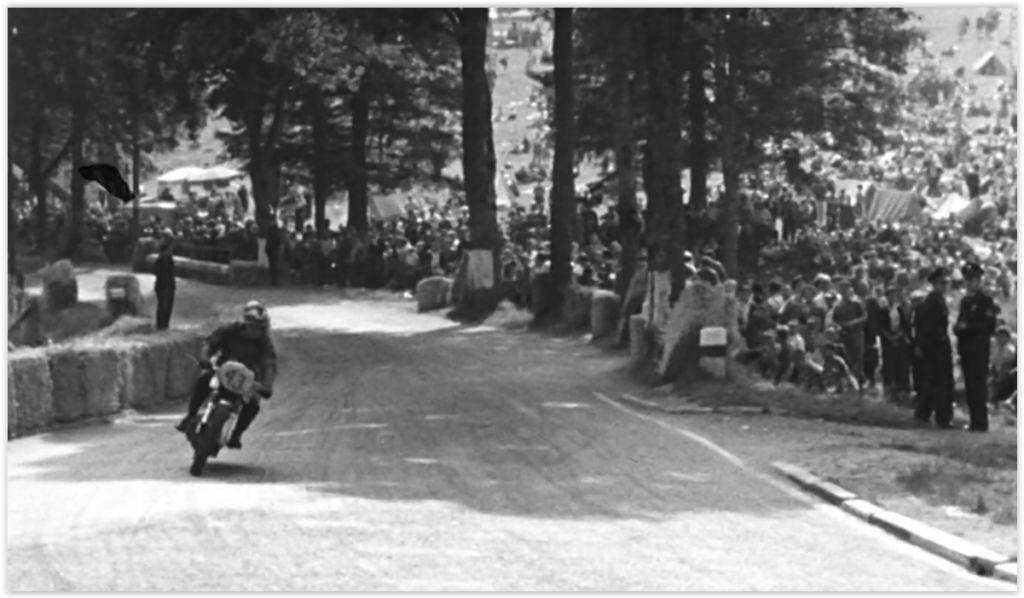
1956 with the new team mate and the 125cc IFA-MZ
After countless successes in the previous year, it was clear to everyone involved that it would be difficult to top the successes of 1955. For the end of 1955 from active racing Bernhard “Petrus” Petruschke Ernst Degner was added to the team. The only 24-year-old young driver from Gleiwitz in Upper Silesia (today Gliwice in Poland) should cause some excitement in the team in the coming years. Petruschke continued to work at IFA after his career, the company was renamed MZ in 1956, which stands for Motorradwerke Zschopau. Based on his experience, Bernhard later acted as race director for the state-owned company near Chemnitz.
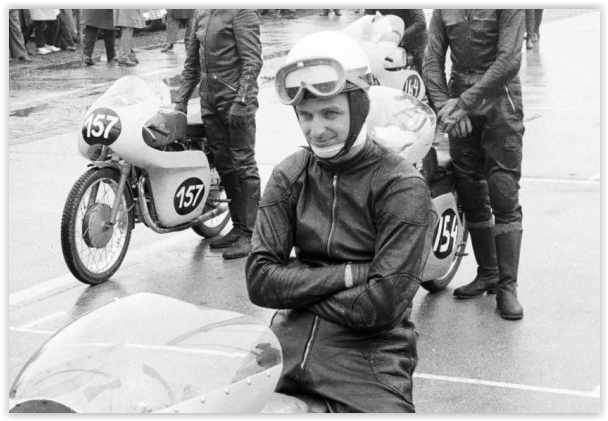

The technical base last year under the name IFA
The 125cc IFA had remained technically almost unchanged in the first two years. After the first 3 machines produced, the remaining 7 of the 10 originally commissioned bikes were manufactured and delivered by 1954, plus an additional 5 copies. At that time the delivery was made to the so-called company sports groups, which coordinated the deployment of the drivers. The machines had meanwhile received various further developments, the outdated 3-speed transmission from 1953 was now history. For the 1956 season, the 4-speed gearbox was replaced by one with six stages, which, however, caused problems at the beginning and was therefore not used for the time being. With a so-called full swing arm, the chassis had also received urgently needed updates in order to remain competitive. The engine was meanwhile with an output of around 16 HP at 9000 rpm. Compared to 3 years ago, this was an increase of at least 20 percent.
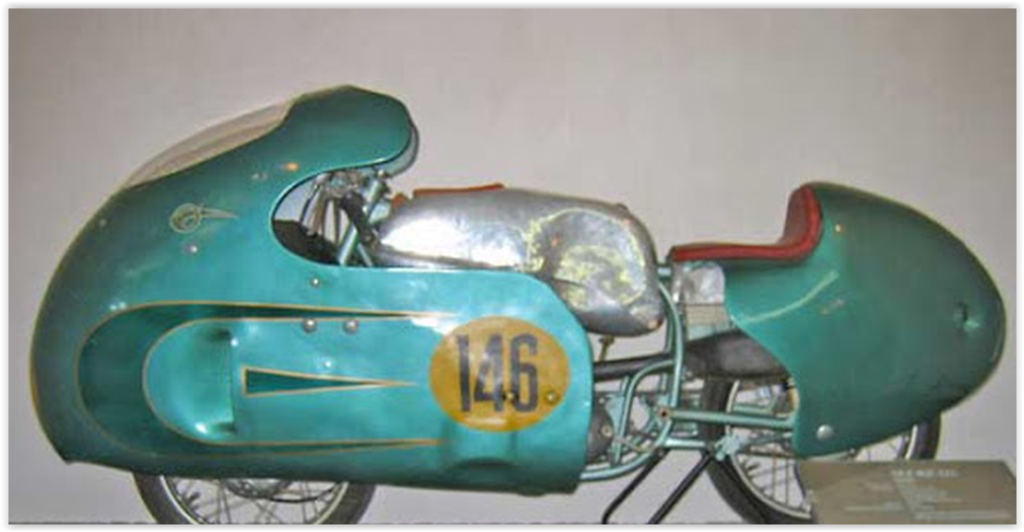
The perfect start to the 1956 season
At the race in Sankt Wendel for the Saarland Prize on April 29, 1956, Fügner had a perfect start to the international season. Behind MV Agusta works driver Luigi Taveri from Switzerland and John Grace from Gibraltar on Montesa, Fügner immediately made it onto the podium with third place. The team performed under the name IFA-MZ and, in addition to Horst, the young Degner and Erhard Krumpholz were also at the start. After the start, Fügner was initially only in 8th place, but as the track dried out he had fought his way forward more and more. The Swiss Florian Camathias finished fifth as the best private driver on an MV, while Krumpholz and Degner missed the top 5.
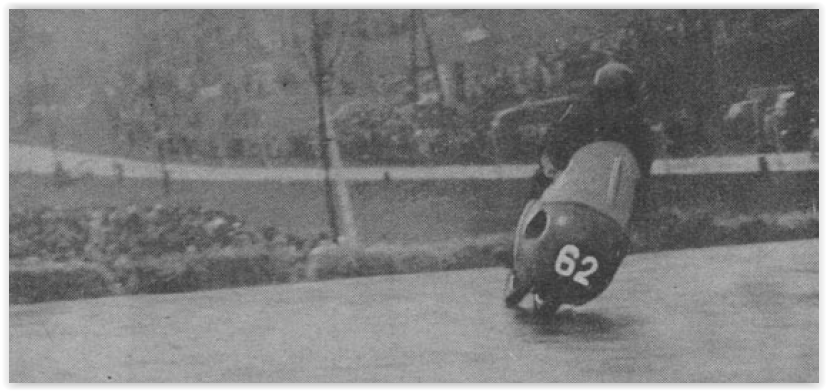
Rhine pokal in Hockenheim
On May 13th it was Erhard Krumpholz again at the Hockenheimring who got the coals out of the fire for IFA-MZ. Behind the two West German August Hobl (DKW) and Karl Hofmann, the oldie from the GDR troop achieved an excellent 3rd place in the 6th Rhine Cup race. The other IFA-MZ pilots did not make it into the top 6, including Horst. For the drivers from East Germany it was always an adventure in the west to be in the neighboring “brother country”. What vehicles they saw there and how rapidly the Federal Republic was developing in contrast to the GDR was certainly not easy for the IFA people to digest.What the “Westerners” from England had in the paddock in terms of material and tools, the poor people from the GDR could only dream of.



Season highlight in June
After Fügner celebrated his season highlight last year with 3 victories in July, this was already in June the year after. In Saxony-Anhalt on the Halle-Saale loop for Horst it was a question of defending his two victories from the two years before. The man from Chemnitz managed indeed the hat trick in the 125cc class. With the third victory in a row, he was now the most successful driver of this race, which has been held since 1950. Until then, he had to share this honor with his former comrade Bernhard Petruschke and Erhart Krumpholz with 2 wins each. In general, it was a very good season for Fügner, especially in national races. The starting position for defending the title in the GDR championship of the 125cc series was of course excellent after the victory on the Halle-Saale loop.

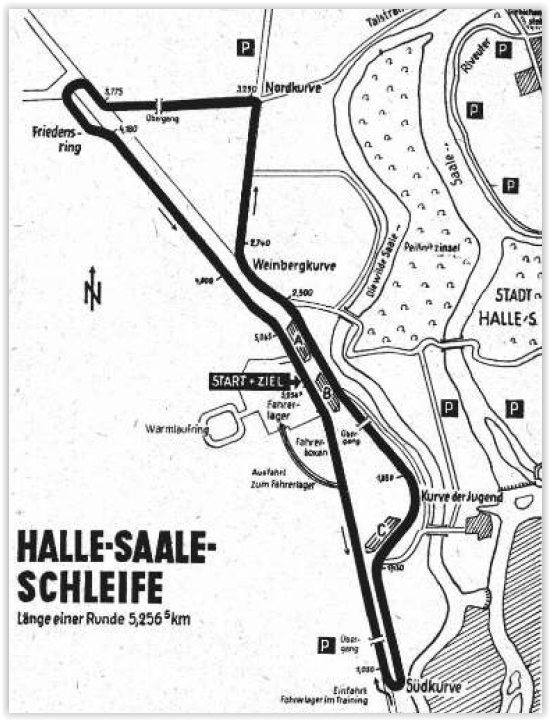
Successful second half of the season
Even if he didn’t quite match the number of victories from the previous year in the 1956 season, Horst Fügner’s track record was definitely impressive. At the GP of Czechoslovakia, which was not yet part of the World Championship, there was traditionally a lot of competition from abroad. Degner and Fügner had set the best practice time and in the race it was the second named who crossed the finish line behind the Czech František Bartoš (CZ). The Swede Svensson (Ducati) came third ahead of IFA-MZ veteran Erhart Krumpholz, while Ernst Degner fell. Team oldie Krumpholz had already proven with second place at the Norisring near Nuremberg that he was not yet too old to be fast.


The Brno tragedy in 1956
Unfortunately, the weekend in Brno was overshadowed by the fatal accidents of Hans Baltisberger (see his story in our history tab) and Michel Mouty from France. During the race on the Avus in Berlin, the competition with MV works driver Taveri and the DWK works machines was overwhelming, but Fügner still managed fourth place, while Krumpholz was eliminated with a technical problem at the IFA-MZ.

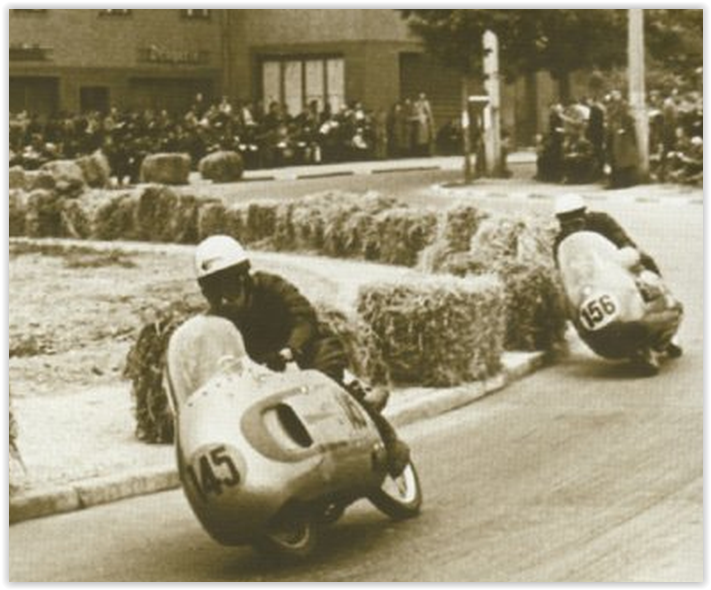
Title defense as GDR champion
At the end of the season Horst Fügner managed to defend his 125cc title in the GDR championship from the previous year. With very consistent performances, including at the Stadtparkrennen in Leipzig, with a 2nd place behind Degner, Horst was the hardest-working points collector this season. IFA-MZ later became MZ and with Ernst Degner he had found a new challenge from his own team for the future. However, it was almost more important for Fügner that his machine became more and more competitive. Engineer Walter Kaaden was supposed to find some horsepower again in winter and for 1957, at least at the German GP, they hoped to have a say about the first 6 places.
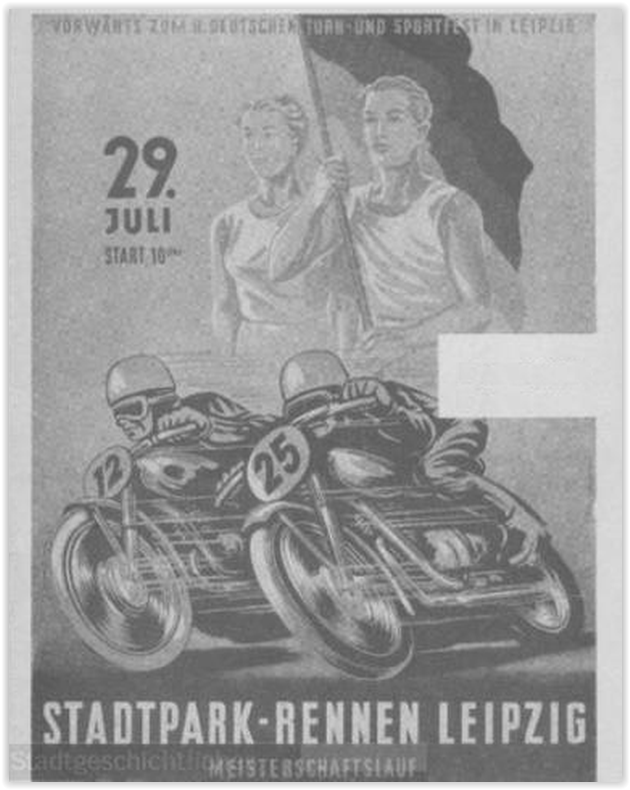

Far too many victims of motorcycle racing in 1956
Without claiming to be exhaustive, here are the known victims of motorcycle racing in 1956. The number of at least 18 fatalities on the world’s racetracks is simply horrific. In 1956, three drivers alone lost their lives on the dangerous road circuit on the Isle of Man. We have dedicated a separate chapter in our history to the German Hans Baltisberger, who sacrificed his life to racing in Brno.


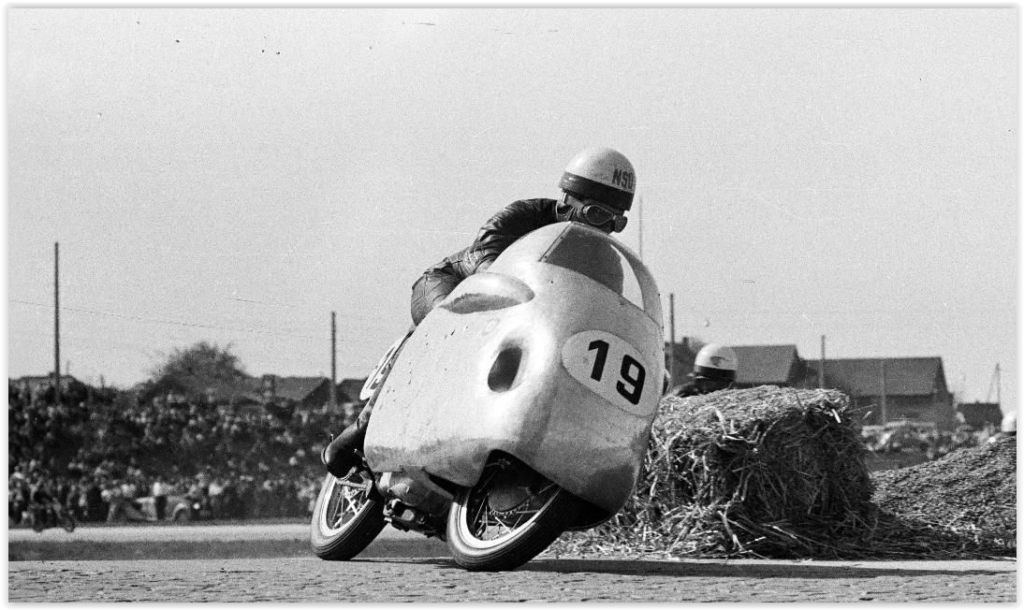

Part 5 with the Story about Horst Fügner coming soon..
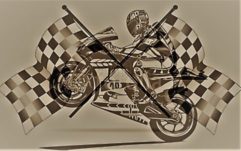
No Comments Yet